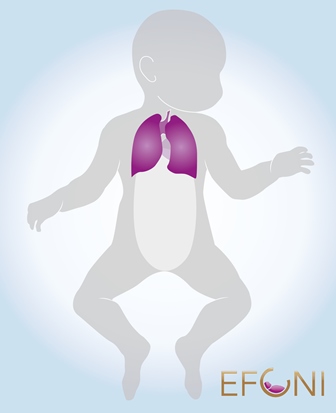how is surfactant administered to premature babies
Surfactant is a liquid given through the breathing tube. Surfactant therapy is given by inserting a tube into the trachea of respiratory tract.

Efficacy Of Insure Vs Mist Surfactant Administration Protocols Respiratory Therapy Society Of Ontario
Surfactant is delivered using an artificial airway or breathing tube that is inserted into the trachea or windpipe either immediately at birth for extremely premature babies or later once respiratory problems has revealed themselves.

. The option of intubationsurfactantextubation INSURE has been effectively used for many years for surfactant treatments. The surfactant is administered via a thin catheter into the trachea in small aliquots while the baby is spontaneously breathing on CPAP support. Surfactant premature babies treatment prevention.
Fortunately surfactant is now artificially produced and can be given to babies if doctors suspect they are not yet making surfactant on their own. It is important to. Surfactant replacement therapy for premature babies acts to keep the alveoli from sticking together and is supplemented with oxygen or ventilation to help the baby breathe.
Premature infants may be born before their lungs make enough surfactant. Why is surfactant so important. Surfactant coats the alveoli the air sacs in the lungs where oxygen enters the body.
For preterm infants with respiratory distress syndrome delivery of surfactant via brief intubation INtubate SURfactant Extubate. Surfactant deficiency is a documented cause of neonatal respiratory distress syndrome NRDS a significant cause of morbidity and mortality in premature infants. A recent study using data from the Pediatrix Medical Group found that the majority of surfactant given to premature infants is administered off-label due to its common use in more mature and larger infants.
If a premature baby is lacking surfactant artificial surfactant may be given. Most of these babies also need extra oxygen and. The majority of infants who received surfactant off-label had.
Surfactant is a mixture of fat and proteins made in the lungs. To evaluate how frequently surfactant is used off-label in preterm infants. They have used six surfactant preparations.
Get Info on Similac Formula Learn How to Get Up to 400 in Savings. Therapeutic indications for surfactant replacement therapy include. The goal of the extubation arm of the procedure is to transition the.
Ad Sign Up Now for Formula Resources Samples and Coupons from Similac Rewards. Surfactant replacement therapy for premature babies acts to keep the. If a baby is premature born before 37 weeks of pregnancy they may not have made enough surfactant yet.
This prevents the alveoli from sticking together when your baby exhales breathes out. Medicines to help calm the baby and ease pain during treatment. What are possible complications of RDS in premature babies.
We conducted a retrospective cohort analysis of prospectively collected administrative data for 2005-2015 from 348 neonatal intensive care units in the US. In babies less than 29 weeks gestation alec significantly improved the mean sem compliance at 6 hours from 054 006 to 091 013 mlcm h2o. The thera-peutic efficiency of a given surfactant preparation correlates with its lipid and protein composition and other factors but it is also highly dependent on the technique used for administration.
Babies sometimes have complications from RDS treatment. We quantified off-label administration of poractant alfa calfactant or beractant in inborn infants born at. Surfactant is a liquid given through the breathing tube.
Pulmonary surfactant is a lipoprotein complex that lines the alveoli and decreases the surface tension to prevent lung atelectasis. The surfactant is indicated in all neonates with rds. We undertook a randomized controlled trial to determine whether human surfactant administered endotracheally at birth to very premature infants gestational age 24 to.
For patients randomized to early NCPAP plus surfactant 4mlkg of surfactant were administered through an endotracheal tube in two aliquots 2 minutes apart followed by positive pressure ventilation administered for one minute with a Neopuff Infant Resuscitator pre-set to give a peak pressure of 20 cm H2O and 5 cm H2O of positive end expiratory pressure. Surfactant is a mixture of fat and proteins made in the lungs. Surfactant treatment reduces the risk and the severity of respiratory distress syndrome rds in premature infants.
Surfactant replacement may help make RDS less serious. Surfactant is administered. While the use of surfactant to prevent and treat RDS in these larger more mature infants is often routine there is a paucity of data on.
The baby is monitored while giving surfactant. Reatment with exogenous surfactant has saved the lives of thou-sands of premature babies in the past few decades 1.

Nicu Procedures Surfactant Administration In A Preterm Infant Youtube

Clinical And Experimental Pediatrics

Treatment Of Breathing Problems In Premature Babies

Respiratory Distress Syndrome Of The Newborn Rt

Less Invasive Surfactant Administration A Word Of Caution The Lancet Child Adolescent Health

Lung Surfactants Antenatal Corticosteroids Nursing Pharmacology Osmosis

How To Use Surfcath A Catheter For Smoother Administration Of Surfactant In Premature Babies Youtube

Surfactant Administration Nicu Youtube

Nicu Procedures Surfactant Administration In A Preterm Infant Youtube

Surfactant Replacement In Neonates By Brian Walsh For Openpediatrics Youtube

Flowchart Of The Administration Of Surfactant Download Scientific Diagram

Surfactant Replacement Therapy A Milestone In Neonatology Efcni

In The Nicu High Flow Oxygen Boosts Intubation Success On First Attempt Medpage Today

Respiratory Distress Syndrome In Preterm Neonates In The Era Of Precision Medicine A Modern Critical Care Based Approach Pediatrics Neonatology

Surfactant Administration Through Laryngeal Or Supraglottic Airways Salsa Facebook

Breathing Problems And Premature Babies

Less Invasive Surfactant Delivery Works For Tiniest Newborns Medpage Today
